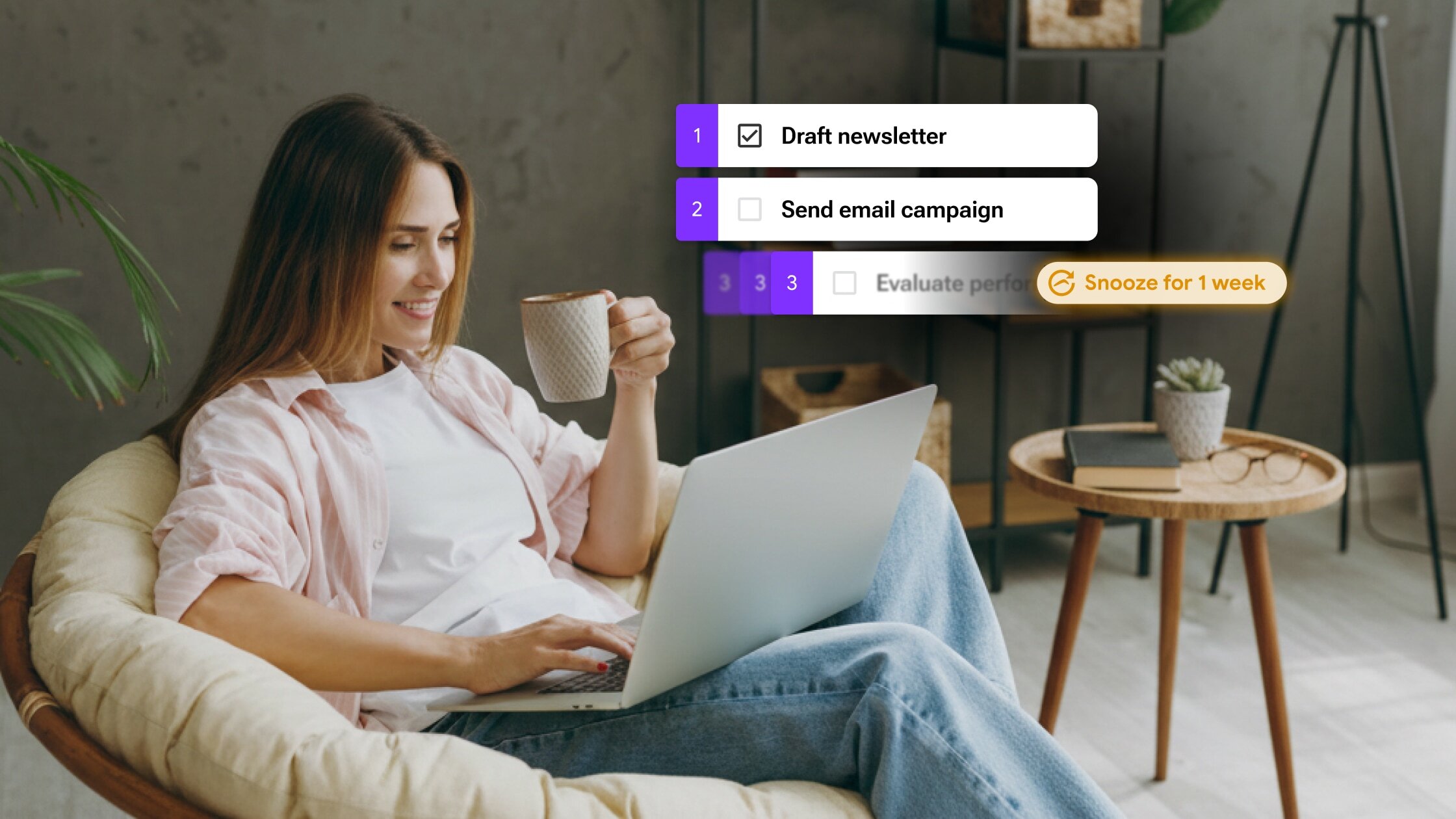Snooze your tasks, recharge your brain
Snooze has arrived in GQueues! Hide tasks until you're ready for them and free up your mind so you can stay focused on what’s actionable now.



We just added a new feature for your tasks: snooze! You can now make tasks disappear from your queues and return at a time you choose. This is a handy capability for cleaning up your queues; it allows you to focus on the here and now without losing track of longer-term goals and responsibilities. While you’re waiting for a future date or a deliverable from a member of your team, you can hide the task out of the way.
When the creators of Boomerang joined forces with GQueues earlier this year, we knew building the snooze feature for tasks would be one of our first priorities. We’ll take this opportunity to re-introduce ourselves, explain why ‘snooze’ is both sentimental for us and central to our theory of productivity, and show you how this new addition to GQueues will help you get even more done.
A bit of Boomerang history
Legend has it that the first prototype of Boomerang’s namesake ‘email reminder’ feature was coded in an Austin, TX, coffeeshop while Alex was visiting for a bachelor party. But that was circa 2010, and the true origin story may be lost to the sands of time.
Back in those days, smartphones were nascent, Slack was years away, and video calls were basically science fiction. Email was a critical means of communication for knowledge workers, arguably even more so than it is today, and Merlin Mann had coined Inbox Zero as an approach to managing the increasing volume. But the tools to process your messages were still lacking: using ‘delete’ meant it was gone forever, and Gmail’s ‘archive’ got it out of your inbox but didn’t facilitate follow-up.
Email is notably an asynchronous means of communication (the message typed by the sender is read minutes, hours, or days later by the recipient and not simultaneously), but it also often contains information or context that is relevant at a future date (for example, when you purchase a flight ticket and receive a confirmation code for your departure next month). And given the aforementioned volume, important info gets buried fast in your own inbox and you can’t rely on your recipient to be fastidious about getting back to you for messages you send!
Our extension solved these problems. Mike has said you can think of the Boomerang server as a big collection of timers — millions of them, for each message Boomeranged by one of our users. When the timer is up, your email is returned to the top of your Inbox, and you can do what you need to do: check in for your flight, email the recipient again if they haven’t responded, or maybe even Boomerang the message again further in the future.
We liked the name Boomerang because it felt more active than snooze. The important part is that your email comes back to you as a reminder, like the flying object, not so much that it goes away to rest. It’s no surprise that Google used a different name when they copied our feature natively into Gmail in 2017. (But isn't it funny that the Gmail keyboard shortcut for snooze is "B" not "S"? Or "Z" would make sense: snooZe. Why B, I wonder? I know another word that starts with B that's not snooze!)
So now you might be thinking “cool story bro, but what’s this got to do with my tasks?” Well…
Mental fatigue & cognitive overload
The reason snooze is so powerful lies in how our brains work. There’s no doubt it’s aesthetically pleasing to clear emails from an inbox or tasks from a queue, but the benefits are much greater than mere aesthetics. Removing tasks from a to-do list frees up mental capacity, whether you are actually completing the task or simply making it disappear for the time being.
Cognitive scientists have shown that simply seeing a list of unresolved items consumes mental energy. Psychologists sometimes call this the “open loops” problem: every unresolved task holds a tiny slice of your attention, even when you’re not actively working on it. The more items you have visible in front of you, the more of your finite working memory gets tied up—leading to distraction, mental fatigue, and that overwhelmed “where do I even start?” feeling.
One way to close an open loop is to do the task. But often, items in your queues aren’t actionable right now: you may be waiting on a coworker. The task is tied to an event in the future. Maybe you simply don’t have the time, tools, or context to work on it today.
That’s where snooze comes in.
The best task management app helps you be more productive
Snooze lets you temporarily hide tasks that aren’t relevant or actionable yet while still guaranteeing they’ll return to your attention when you need them. By snoozing tasks, you get a clean queue focused on what’s doable right now. This reduces cognitive overload and frees up mental bandwidth for faster, higher-quality work on your priority items.
Enough generalities — to make this concept more concrete, here are some situations when you can clean up your queue and free up some mental space by snoozing a task:
- Your freelance writer is drafting a blog post for you. Snooze “Schedule blog post” until their due date so your queue only shows active work.
- Planning an event or a team offsite? Snooze your after-action tasks like “send feedback survey” until after you return so you can focus on having a great event.
- You need to check analytics one week after a product launch. Snooze the “Review launch metrics” task so it reappears once there’s enough data to analyze.
Google may have won the naming battle, so people widely know this action as “snoozing” and that’s how you’ll refer to it for your tasks. But at its core, it’s the same idea Boomerang pioneered almost 15 years ago for your email: clear out the clutter now, bring the important stuff back when the time’s right.
So go ahead and have yourself a snoozefest! We hope you find it helpful.




Helping you discover how to boost your productivity and get more done.













.jpg)

